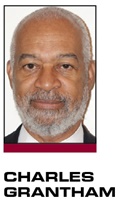In today’s most popular professional sports leagues the role of business analytics continues to escalate. The introduction of the “Moneyball” statistical application to player efficiency in MLB years ago has expanded to other professional sports. Analytics professionals have been added to management at both league and team levels. Additionally, analytics are a driving force in the drafting of new players and in the acquisition of free agents.
Team owners, after gaining more restrictive free agency rules, and with it slower salary cap growth, in the most recent collective-bargaining agreements, have also embraced the analytic model to measure cost efficiency. Given tighter salary caps, the optimal mix of player salaries, playing statistics, age and position are increasingly determining the makeup of team personnel. While these applications may be embraced by teams, the uniqueness of a player’s talent and his chemistry with teammates are still paramount determiners of individual player value and, ultimately, predictors of team success. Both of these lie outside the analytics purview.
Consequently, the collective place of analytics in the hierarchy of team success factors remains controversial. However, for these same reasons, analytics has one sure and, currently, underused, place: with sports unions, to help them regain some of the financial footing lost over the last 20 years in CBAs.
As a result of recent lockouts and the financial concessions granted by unions to end them, the need for business analytics among sports unions has never been greater. Why? Because better knowledge of analytics could not only have informed union decisions in these last 20 years of CBAs, but also could have provided the unions a means of tracking overall league revenue and secure a more accurate share of their diminishing percentages. Use of analytics now could potentially relieve some losses, and prevent future ones.
■ How analytics can matter
Until 1995, the NBA draft established market value for rookies, often dictating substantial salaries. However, the CBA in 1995 included a rookie wage scale that reduced rookie salaries well below market value — a negotiated victory for the league. This caused a massive increase in college underclassmen and graduating high school seniors entering the 1996 to 1998 drafts. Aspiring players reasoned that, if they couldn’t make money on their first NBA contracts anymore, they should secure those as quickly as possible so they could get to their second, more lucrative contracts sooner.
This was a consequence of a CBA that would prove costly to the National Basketball Players Association thrice because it didn’t possess the appropriate analytics or employ anyone to develop them. The players agreed to the rookie wage scale under the NBA’s dual pretense that:
1) there were too many rookies entering the league before finishing their college educations, which was to the rookies’ detriment; and
2) the revenue saved by the rookie wage scale would instead go to free agents (veteran players).
Proper use of analytics would have shown players that reason one was misleading: In the 20-year period from the 1976 merger of the NBA-ABA through 1995 NBA draft, fewer than 10 high school seniors or college freshmen made themselves available for the NBA draft. That number increased tenfold from 1996-98, with the numbers of college juniors doubling and sophomores tripling. Such information would have enabled the union to insist upon a provision in the agreement to ensure that veteran players received revenue from the instituted wage scale. That revenue, instead, went back to the teams. The league then used the swollen draft numbers generated by the rookie wage scale to justify a further acquisition in the following CBA: the age restriction (19).
Now, after years of concessions, the single biggest challenge facing professional sports unions is how to monitor the growth of the leagues’ revenue in order to receive players’ guaranteed share and secure players’ salaries and overall benefits. The leagues block union access to the most intimate financial information because the unions’ unfamiliarity with analytics, initially, meant failure to ensure appropriate access via the CBA. The NBPA may only legally review all league and team financial records if the league claims loss of revenue would prevent them from honoring the salaries and benefits to the players. With the robust financial projections over the next decade, such a claim seems unlikely.
■ The challenge
Analytics professionals working for players’ unions could still improve conditions for members. They could assist players in their preparation for free agency in a cap system and find the optimal mix of compensation in player contracts, over a lifetime, in cash versus deferred income. Considering more guaranteed, deferred compensation for players now could prolong their income streams, and relieve some of the financial stresses of retirement.
Additionally, the NBA and NHL employ an escrow system, created to guarantee that the leagues not exceed their negotiated share of revenue committed to salaries and benefits of players. The leagues automatically deduct 8 to 10 percent of each player’s salary, which is placed in an escrow account to ensure that any overage of league-committed dollars is returned.
The challenge for the unions’ analytics personnel would be to determine how to maximize use of the funds designated for return to individual players in the absence of overage. The 10-year agreement to which they are currently bound then becomes a gift, in that unions have several years for funds to accumulate before they may need to use them. These funds may be sufficient to sustain players during a lockout, and players’ ability to withstand the lockout is incentive for the leagues to stop using it against them.
Charles Grantham is the former executive director of the National Basketball Players Association (1988-95).
NBA responds on salary cap, league revenue issues




